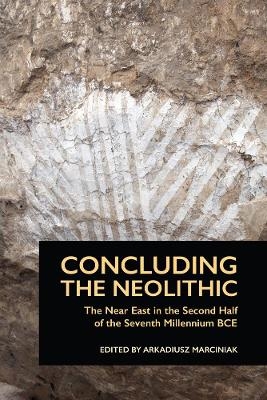
Concluding the Neolithic
The Near East in the Second Half of the Seventh Millennium BCE
Seiten
2019
Lockwood Press (Verlag)
978-1-937040-83-3 (ISBN)
Lockwood Press (Verlag)
978-1-937040-83-3 (ISBN)
The second half of the seventh millennium BC saw the previously affluent and dynamic Neolithic way of life end. The significant social and economic transformations of local communities, as shown in new patterns of architecture and burial practices, and in pottery manufacture. Sets the changes in context and discusses the impact in detail.
The second half of the seventh millennium BC saw the demise of the previously affluent and dynamic Neolithic way of life. The period is marked by significant social and economic transformations of local communities, as manifested in a new spatial organization, patterns of architecture, burial practices, and in chipped stone and pottery manufacture. This volume has three foci. The first concerns the character of these changes in different parts of the Near East with a view to placing them in a broader comparative perspective. The second concerns the social and ideological changes that took place at the end of Neolithic and the beginning of the Chalcolithic that help to explain the disintegration of constitutive principles binding the large centers, the emergence of a new social system, as well as the consequences of this process for the development of full-fledged farming communities in the region and beyond. The third concerns changes in lifeways: subsistence strategies, exploitation of the environment, and, in particular, modes of procurement, consumption, and distribution of different resources.
The second half of the seventh millennium BC saw the demise of the previously affluent and dynamic Neolithic way of life. The period is marked by significant social and economic transformations of local communities, as manifested in a new spatial organization, patterns of architecture, burial practices, and in chipped stone and pottery manufacture. This volume has three foci. The first concerns the character of these changes in different parts of the Near East with a view to placing them in a broader comparative perspective. The second concerns the social and ideological changes that took place at the end of Neolithic and the beginning of the Chalcolithic that help to explain the disintegration of constitutive principles binding the large centers, the emergence of a new social system, as well as the consequences of this process for the development of full-fledged farming communities in the region and beyond. The third concerns changes in lifeways: subsistence strategies, exploitation of the environment, and, in particular, modes of procurement, consumption, and distribution of different resources.
Arkadiusz Marciniak is Professor of Archaeology at the University of Poznan, Poland and Professor at Faculty of Education, Humanities & Law, School of Humanities and Creative Arts, Flinders University, Australia. Among his recent publications are Placing Animals in the Neolithic. Social Zooarchaeology of Prehistoric Farming Communities (UCL, 2005) and Grahame Clark and His Legacy (with John Coles; Cambridge Scholars, 2010).
| Erscheinungsdatum | 10.05.2021 |
|---|---|
| Reihe/Serie | Material and Visual Culture of the Ancient Near East |
| Zusatzinfo | b & w illustrations throughout |
| Verlagsort | Atlanta |
| Sprache | englisch |
| Maße | 152 x 228 mm |
| Gewicht | 562 g |
| Themenwelt | Geisteswissenschaften ► Archäologie |
| Geschichte ► Allgemeine Geschichte ► Vor- und Frühgeschichte | |
| Geisteswissenschaften ► Geschichte ► Regional- / Ländergeschichte | |
| Sozialwissenschaften | |
| ISBN-10 | 1-937040-83-6 / 1937040836 |
| ISBN-13 | 978-1-937040-83-3 / 9781937040833 |
| Zustand | Neuware |
| Haben Sie eine Frage zum Produkt? |
Mehr entdecken
aus dem Bereich
aus dem Bereich
auf den Spuren der frühen Zivilisationen
Buch | Hardcover (2023)
C.H.Beck (Verlag)
20,00 €
Konzepte – Methoden – Theorien
Buch | Softcover (2024)
UTB (Verlag)
39,90 €
Was Pompeji über uns erzählt
Buch | Hardcover (2023)
Propyläen (Verlag)
32,00 €


